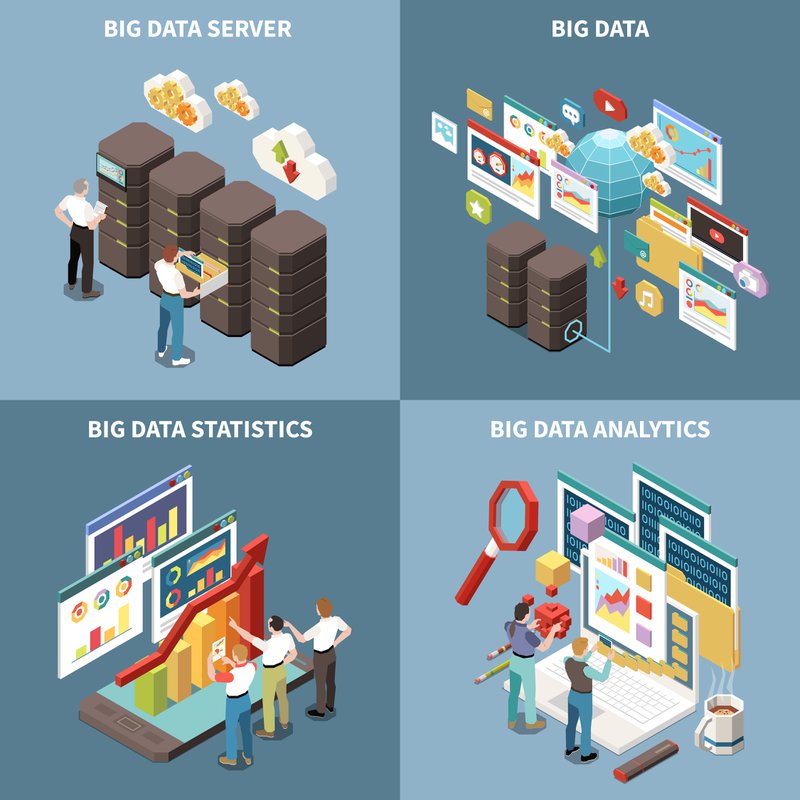
The former first lady Michelle Obama said, "You can't make decisions based on fear and the possibility of what might happen." While you must make some decisions based on gut instinct, most decisions require a delicate balance between logic and intuition. Data Analytics is the modern-day solution to finding the logical backing needed to make the right decision. In this article, we explore the types and role of data analytics in decision-making.
Data Analytics is the method of analyzing data sets to detect trends and draw inferences about the information they contain. Data analytics techniques and technologies are popularly used in various industries to enable organizations and top management to make well-informed decisions.
There are four types of Data Analytics-
The types of Data Analytics have been listed from least complex to most complex. The amount of value every kind of analytics adds to the decision-making process is directly proportional to its overall complexity.

Descriptive analytics is used to find the answer to the question of what happened? A simple example would be how Polyuno has analyzed the number of monthly customers it has for each type of service it offers in the past quarter. Based on this analysis, it will decide which products the company should be focusing on for the next quarter to ensure maximum growth. Other examples include how many clicks you got for an ad posted on Facebook, the most prominent age group of buyers, etc.
Descriptive analytics is the simplest, most basic type of analytics. It generates a summary of historical data to produce useful information and possibly prepare the data for additional analysis. Descriptive analytics examines raw data to get valuable insights. Data aggregation and data mining are two prevalent methods used in this form of analytics.
Data analytic features are present in primary platforms such as Twitter Analytics, Instagram Insights, and Facebook Messenger. While Data analytics is essential for deriving necessary conclusions from numerical facts, it cannot be the only form of analytics you depend on when making decisions. Data analytics may tell you which product has generated the most revenue this month, but it won't tell you how to ensure that it makes more the next month.
Once you have figured out what happened, the natural next step to figure out why it had happened, diagnostic analytics does just that. It involves a more in-depth analysis of all the data collected and deriving more descriptive results and conclusions.
Data scientists and consultants like the ones here at Polyuno use filters, comparison tables, correlations, data reading, data mining, and various other tools and techniques to figure out the reasoning behind the problems.
Diagnostic analytics involves analyzing large amounts of data with a fine-toothed comb, making it one of the most time consuming amongst the different types of data analytics. Through Diagnostic Analytics, Data consultants identify anomalies (why is there a deviation from the pattern?), then they go on to explain the anomalies and discrepancies. The simplest way to do this is to establish relationships between different variables by looking at the events that may have resulted in the irregularities.
Once you figure out why it happened through diagnostic analytics, you can decide how to deal with the reasons behind the changes.
Predictive analytics tell us what might happen in the future. It uses exiting historical data to establish trends that allow data scientists to extrapolate and predict what might happen in the future. For example- data scientists will use Predictive Analytics to analyze a company's historical data, expected market growth for the foreseeable future, along with demand and supply trends to figure out if a store will benefit from expansion in a particular area.
Predictive analytics is much more advanced than both descriptive and diagnostic analysis. Tools used in predictive analytics include machine and deep learning to recognize trends, predictive and statistical modeling, figure out correlations and causations, and establish new trends.
Big corporations mostly use predictive analytics in their decision-making process, primarily because of its progressive nature. While the value this type of analytics adds to the decision-making process, it is still just an estimate, and its accuracy depends on the data quality, quantity, and stability. Therefore any insight gleaned through predictive analytics needs to be treated delicately.
Uses of predictive analytics include, but isn't limited to the following-
Prescriptive Analytics is where Artificial Intelligence (AI) and Big Data come into play. Derived from the word prescription, Prescriptive Analytics prescribes the steps required in the future.
Prescriptive analytics utilizes information generated through descriptive, diagnostic, and predictive data analytics. It is the most complex and advanced form of data analytics and adds the most value to the decision-making process. It is significant for making data-driven, informed decisions. It is an advanced form of data analytics that uses sophisticated state-of-the-art technologies and algorithms to bypass human errors.
In order to figure out what type of data analytics is best suited for your company, there are a couple of essential questions you need to ask. Such as-
The answers to these questions will help you determine an ideal data analytics strategy for your company. Ideally, the system is set up in such a way that it allows for growth. You can logically move on from the primary form of data analytics to a more advanced form.
As you can tell, data analytics is a highly time-consuming and involved process. Most big corporations have in-house teams of dedicated data scientists. Data Analytics is an integral part of ensuring company growth. However, if you don't have the resources to dedicate an in-house team to it, reach out to our data scientists at Polyuno, and we'll take good care of you!